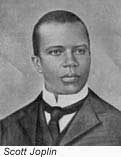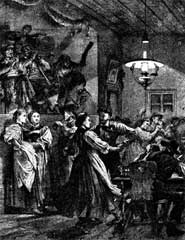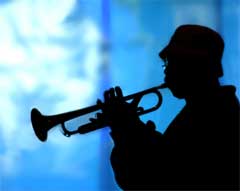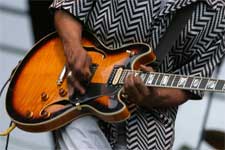Jazz is a musical art form characterized by blue notes, syncopation, swing, call and response, polyrhythms, and improvisation. It has been called the first original art form to develop in the United States of America. Jazz has roots in West African cultural and musical expression, and in African American music traditions including blues and ragtime, as well as European military band music. After originating in African American communities near the beginning of the 20th century, jazz gained international popularity by the 1920s. Since then, jazz has had a profoundly pervasive influence on other musical styles worldwide. Today, various jazz styles continue to evolve.

 For all its genius, early jazz, with its humble, folk roots, was the product of primarily self-taught musicians. But an impressive postbellum network of black-established and -operated institutions, schools, and civic societies in both the North and the South, plus widening mainstream opportunities for education, produced ever-increasing numbers of young, formally trained African-American musicians, some of them schooled in classical European musical forms. Lorenzo Tio and Scott Joplin were among this new wave of musically literate jazz artists. Joplin, the son of a former slave and a free-born woman of color, was largely self-taught until age 11, when he received lessons in the fundamentals of music theory from a classically trained German immigrant in Texarkana, Texas. For all its genius, early jazz, with its humble, folk roots, was the product of primarily self-taught musicians. But an impressive postbellum network of black-established and -operated institutions, schools, and civic societies in both the North and the South, plus widening mainstream opportunities for education, produced ever-increasing numbers of young, formally trained African-American musicians, some of them schooled in classical European musical forms. Lorenzo Tio and Scott Joplin were among this new wave of musically literate jazz artists. Joplin, the son of a former slave and a free-born woman of color, was largely self-taught until age 11, when he received lessons in the fundamentals of music theory from a classically trained German immigrant in Texarkana, Texas.
 Also contributing to this trend was a tightening of Jim Crow laws in Louisiana in the 1890s, which caused the expulsion from integrated bands of numbers of talented, formally trained African-American musicians. The ability of these musically literate, black jazz men to transpose and then read what was in great part an improvisational art form became an invaluable element in the preservation and dissemination of musical innovation that took on added importance in the approaching big-band era. By the turn of the century, American society had begun to shed the heavy-handed, straitlaced formality that had characterized the Victorian era. Strong influence of African American music traditions had already been a part of mainstream popular music in the United States for generations, going back to the 19th century minstrel show tunes and the melodies of Stephen Foster. Also contributing to this trend was a tightening of Jim Crow laws in Louisiana in the 1890s, which caused the expulsion from integrated bands of numbers of talented, formally trained African-American musicians. The ability of these musically literate, black jazz men to transpose and then read what was in great part an improvisational art form became an invaluable element in the preservation and dissemination of musical innovation that took on added importance in the approaching big-band era. By the turn of the century, American society had begun to shed the heavy-handed, straitlaced formality that had characterized the Victorian era. Strong influence of African American music traditions had already been a part of mainstream popular music in the United States for generations, going back to the 19th century minstrel show tunes and the melodies of Stephen Foster.

A number of regional styles contributed to the early development of jazz. Arguably the single most important was that of the New Orleans, Louisiana area, which was the first to be commonly given the name "jazz" (early on often spelled "jass").
 The city of New Orleans and the surrounding area had long been a regional music center. People from many different nations of Africa, Europe, and Latin America contributed to New Orleans' rich musical heritage. In the French and Spanish colonial era, slaves had more freedom of cultural expression than in the English colonies of what would become the United States. In the Protestant colonies African music was looked on as inherently "pagan" and was commonly suppressed, while in Louisiana it was allowed. African musical celebrations held at least as late as the 1830s in New Orleans' "Congo Square" were attended by interested whites as well, and some of their melodies and rhythms found their way into the compositions of white Creole composer Louis Moreau Gottschalk. In addition to the slave population, New Orleans also had North America's largest community of free people of color, some of whom prided themselves on their education and used European instruments to play both European music and their own folk tunes. The city of New Orleans and the surrounding area had long been a regional music center. People from many different nations of Africa, Europe, and Latin America contributed to New Orleans' rich musical heritage. In the French and Spanish colonial era, slaves had more freedom of cultural expression than in the English colonies of what would become the United States. In the Protestant colonies African music was looked on as inherently "pagan" and was commonly suppressed, while in Louisiana it was allowed. African musical celebrations held at least as late as the 1830s in New Orleans' "Congo Square" were attended by interested whites as well, and some of their melodies and rhythms found their way into the compositions of white Creole composer Louis Moreau Gottschalk. In addition to the slave population, New Orleans also had North America's largest community of free people of color, some of whom prided themselves on their education and used European instruments to play both European music and their own folk tunes.
By the end of the 19th century, the city was a regional center of Tin Pan Alley popular music and the young style of ragtime, and a distinctive, new musical style began to develop.
Characteristics which set the early New Orleans style apart from the ragtime music played elsewhere included freer rhythmic improvisation. Ragtime musicians elsewhere would "rag" a tune by giving a syncopated rhythm and playing a note twice (at half the time value), while the New Orleans style used more intricate rhythmic improvisation often placing notes far from the implied beat. The New Orleans style players also adopted much of the vocabulary of the blues, including bent and blue notes and instrumental "growls" and smears otherwise not used on European instruments.

Jazz as a genre is often difficult to define, but improvisation is a key element of the form. Improvisation has been an essential element in African-American music since early forms  of the music developed, and is closely related to the use of call and response in African-American cultural expression. of the music developed, and is closely related to the use of call and response in African-American cultural expression.
The form of improvisation has changed over time. Early folk blues music often was based around a call and response pattern, and improvisation would factor in the lyrics, the melody, or both. In Dixieland jazz, musicians take turns playing the melody while the others improvise countermelodies. In contrast to the classical form, where performers try to play the piece exactly as the author envisioned it, the goal in jazz is often to create a new interpretation, changing the melody, harmonies, even the time signature. If classical music is the composer's medium, jazz is able to stand up for the rights of the performer too, to 'adroitly weigh the respective claims of the composer and the improviser'.[3]
By the Swing era, big bands played using arranged sheet music, but individual soloists would perform improvised solos within these compositions. In bebop, however, the focus shifted from arranging to improvisation over the form; musicians paid less attention to the composed melody, or "head," which was played at the beginning and the end of the tune's performance with improvised sections in between.
Later styles of jazz such as modal jazz abandoned the strict notion of a chord progression, allowing the individual musicians to improvise more freely within the context of a given scale or mode. The avant-garde and free jazz idioms permit, even call for, abandoning chords, scales, and rhythmic meters.
 When a pianist, guitarist or other chord-playing instrumentalist improvises an accompaniment while a soloist is playing, it is called comping (a contraction of the word "accompanying"). "Vamping" is a mode of comping that is usually restricted to a few repeating chords or bars, as opposed to comping on the chord structure of the entire composition. Most often, vamping is used as a simple way to extend the very beginning or end of a piece, or to set up a segue. In some modern jazz compositions where the underlying chords of the composition are particularly complex or fast moving, the composer or performer may create a set of "blowing changes," which is a simplified set of chords better suited for comping and solo improvisation. When a pianist, guitarist or other chord-playing instrumentalist improvises an accompaniment while a soloist is playing, it is called comping (a contraction of the word "accompanying"). "Vamping" is a mode of comping that is usually restricted to a few repeating chords or bars, as opposed to comping on the chord structure of the entire composition. Most often, vamping is used as a simple way to extend the very beginning or end of a piece, or to set up a segue. In some modern jazz compositions where the underlying chords of the composition are particularly complex or fast moving, the composer or performer may create a set of "blowing changes," which is a simplified set of chords better suited for comping and solo improvisation.
|